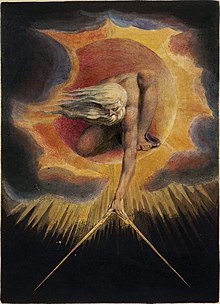Theophilanthropy

The theophilanthropy (French. Theophilanthropy ) belonged like other revolutionary cults an ensemble civil religious festivals and beliefs during the French Revolution , which was to take the place of Christianity and Catholicism in particular in the social and political center. Theophilanthropy belongs to the second half of the 1790s and thus to the late phase of the revolution; it found only limited distribution.
Theophilanthropy saw itself, as its name implies, as "love of God and man", which according to it formed the basis of all civilization. The deistic cult recognized a supreme being and the immortality of the soul, but prohibited any further metaphysical or theological discussion. Masonic influences are suspected. The cultic acts were very simple, the moral and social demands and regulations were of greater importance. Like the cult of reason , theophilanthropy saw the world as a structure organized according to consistent laws.
Theophilanthropy appeared publicly in September 1796 with a manual on the content and practice of the cult, albeit still as "theoanthropophilia". The author was the bookseller Jean-Baptiste Chemin-Dupontès (1760-1852), who had studied theology before the Revolution and was a master in the Masonic Greater Orient of France after 1802. Chemin, who in December 1796 published a second handbook very similar to the first, entitled Manuel des théophilanthropes , organized the first public ceremony in January 1797 with Valentin Haüy, a teacher for the blind . The cult gained a certain number under its new name until it was banned in 1801/1803 Distribution in Paris and some provincial cities. Among the often bourgeois intellectual supporters was Louis-Marie de La Révellière-Lépeaux , a member of the government who supported theophilanthropy in writing and word. La Révellière was ousted from the Directoire in June 1799 , so that the protection of the authorities was largely lost. Due to the Concordat of 1801 between Napoléon Bonaparte and the Pope, the authorities prohibited any theophilanthropic gathering in a public building. In 1803, the Prefect of the Seine department finally banned the cult.
See also
literature
- Albert Mathiez : La Théophilanthropie et le culte décadaire 1796–1801. Essai sur l'histoire religieuse de la Révolution. Félix Alcan, Paris 1903 (also: Paris, university, dissertation, 1903).
Web links
- Jean-Pierre Chantin: Les adeptes de la théophilanthropie: Pour une autre lecture d'Albert Mathiez. In: Rives nord-méditerranéennes 14: Révolution et minorités religieuses. 2003, pp. 63-73 (French).